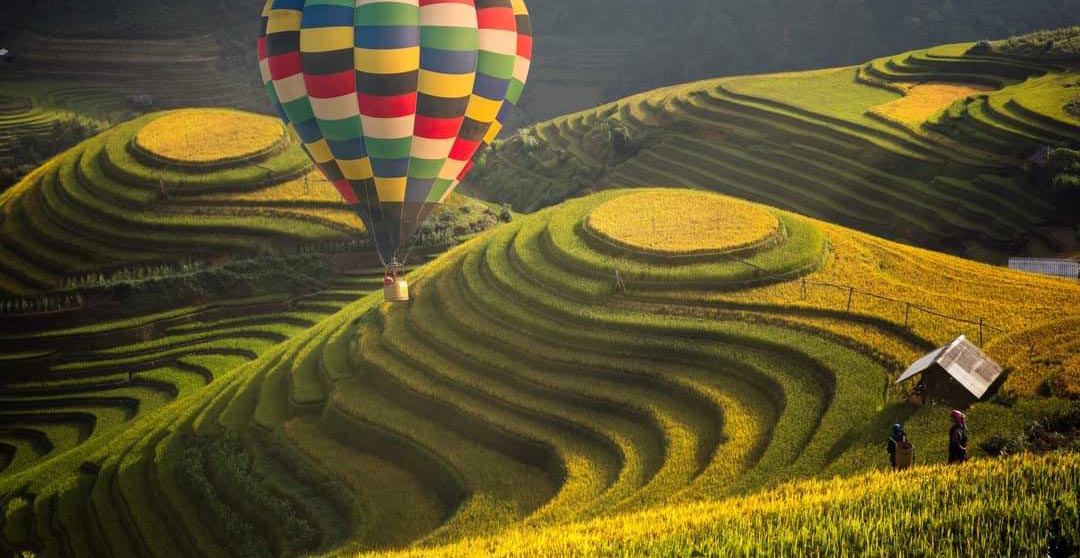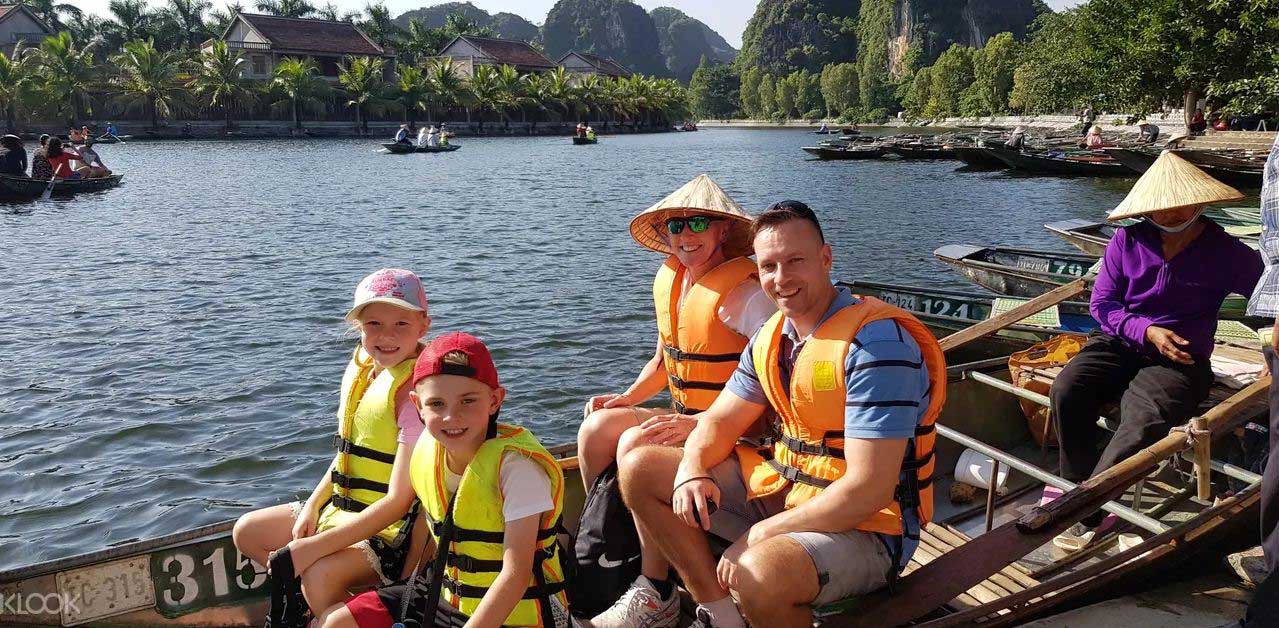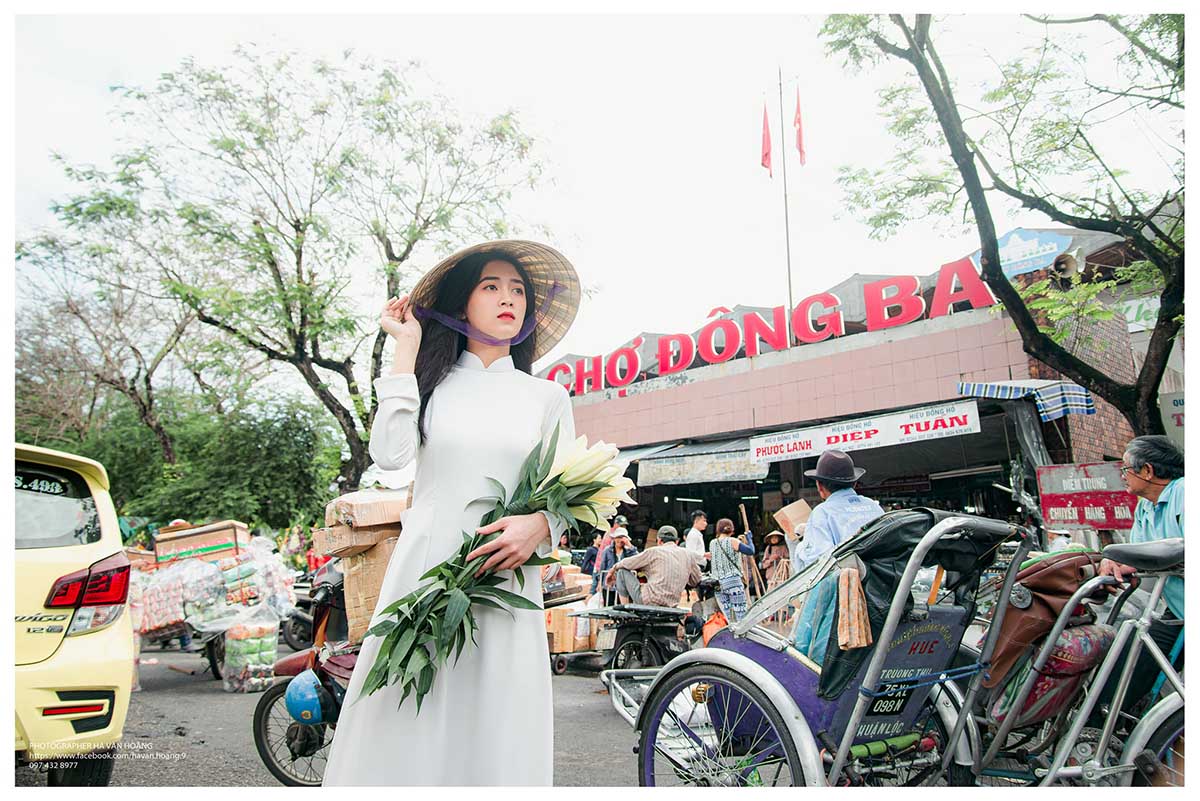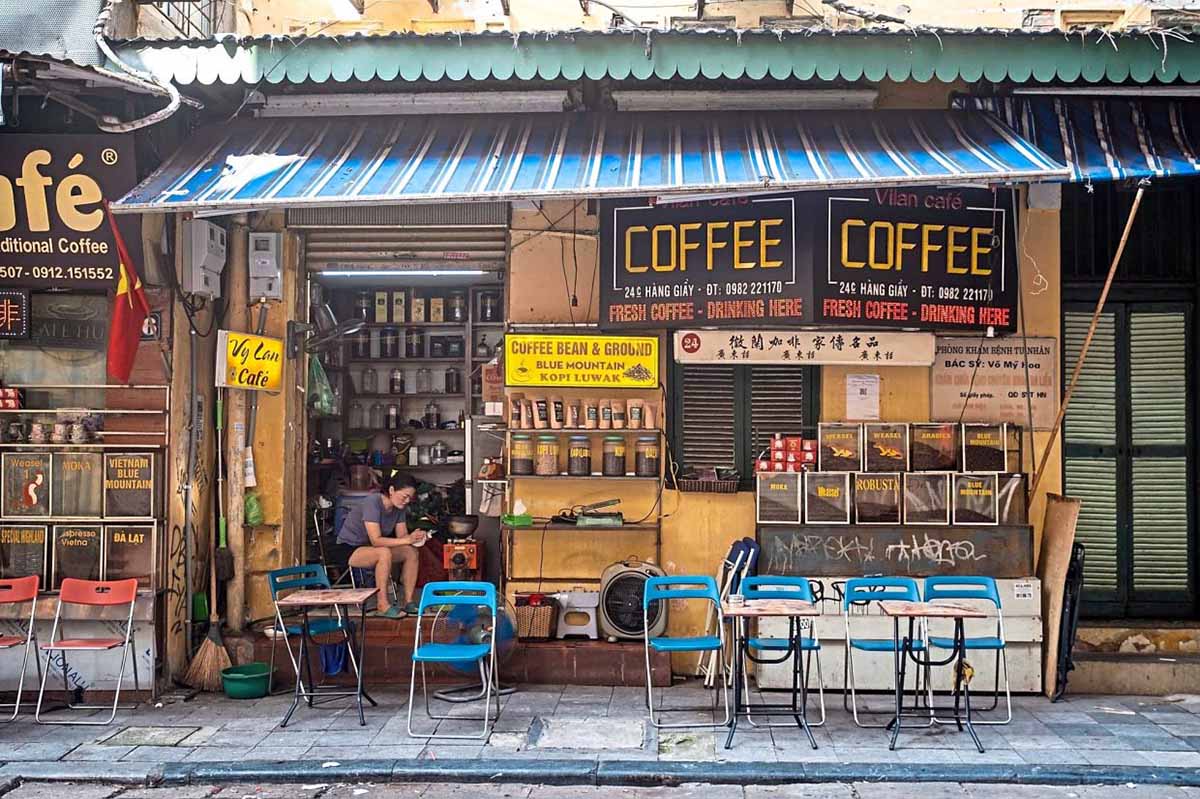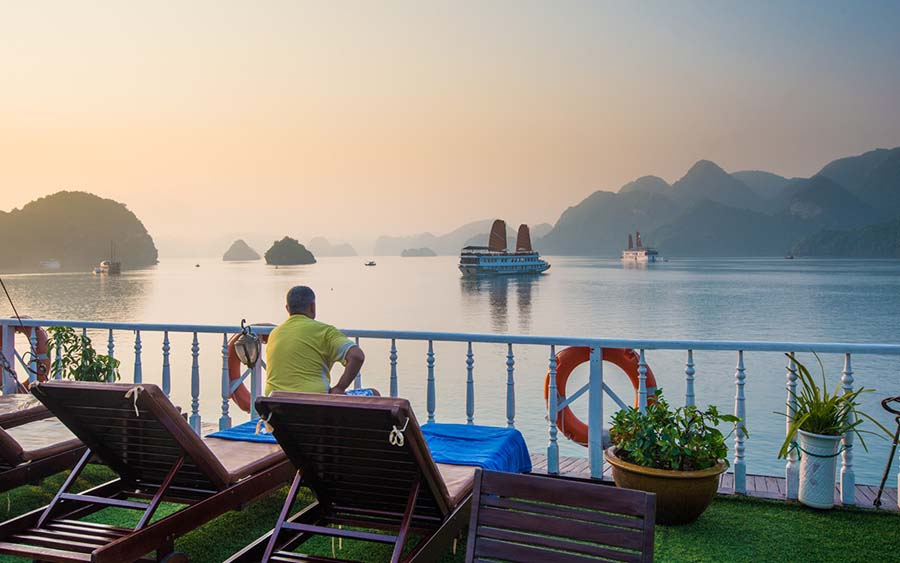Home to the Top of Indochina
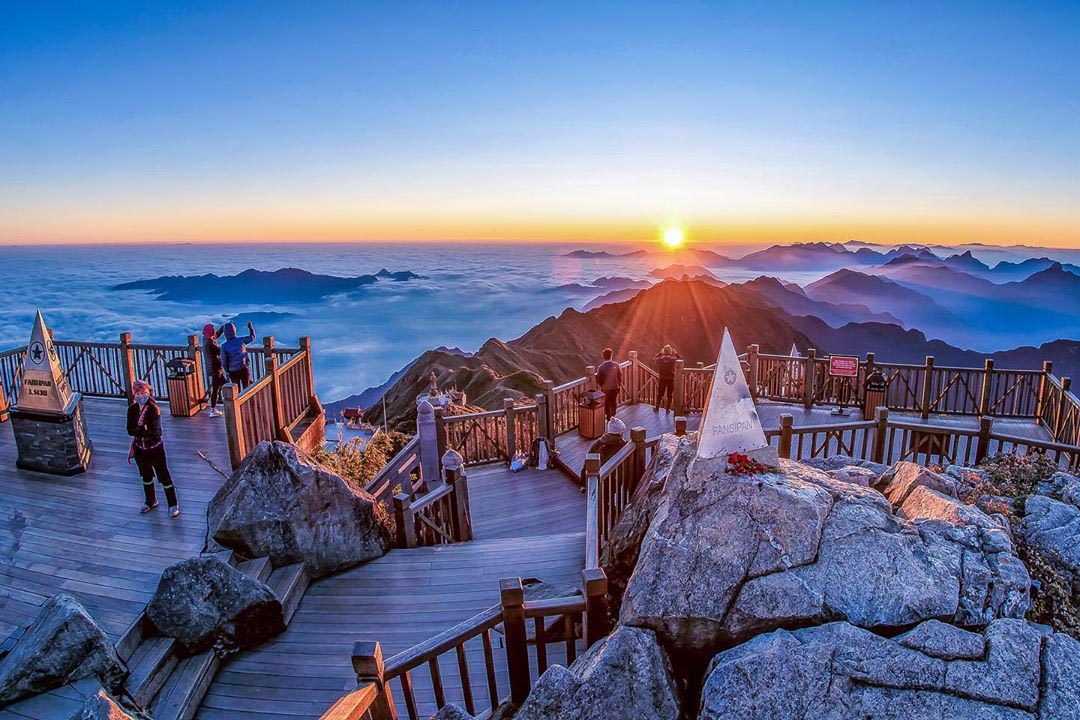
Fansipan is dubbed as Indochina rooftop
One of Sapa's everlasting accolades is its possession of Fansipan Peak standing at 3,147 meters. It marks the highest mountain peak in Vietnam and Indochina. This has drawn a multitude of travelers to consider it an unmissable destination in their travel checklists.
The hiking journey and the scenery from the summit of Fansipan are incredibly impressive. You will see mountain peaks touching the clouds along with majestic nature. This makes visitors feel the effort to reach this place is truly worthwhile. Fansipan's summit is also one of the rare places with snow in a tropical country like Vietnam during winter.
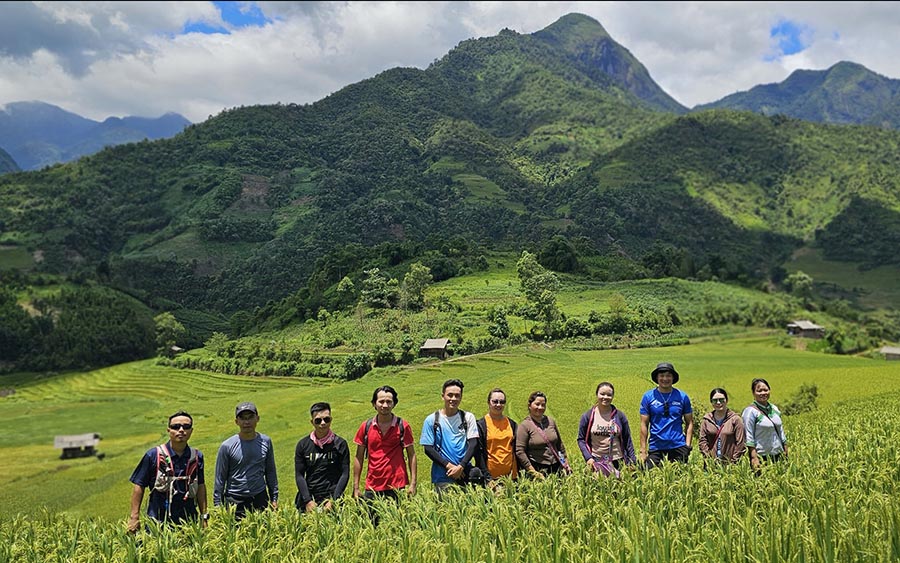
Sapa trekking route
To visit the top of Indochina, you can choose one of these options:
-
Trekking for 1-3 days, depending on your pick-up schedule (Starting from 41 UND/day for a full package tour including guide, meals, transportation, and tour program)
-
Take a cable car to the mountain shoulder and then continue hiking to the summit (Combo from 33 USD)
-
Take a cable car to the mountain shoulder and then use the mountain climbing train to reach the summit (Train ticket starts from 6 USD/person)
The area on Fansipan Mountain is also known as the Sun World Fansipan Legend complex. This region comprises a cable car system, restaurants, food and souvenir stalls, temples, giant Buddha statues, and the summit of Fansipan for visitors to pilgrimage, take a break, and discover.
Among World's 50 Most Beautiful Towns
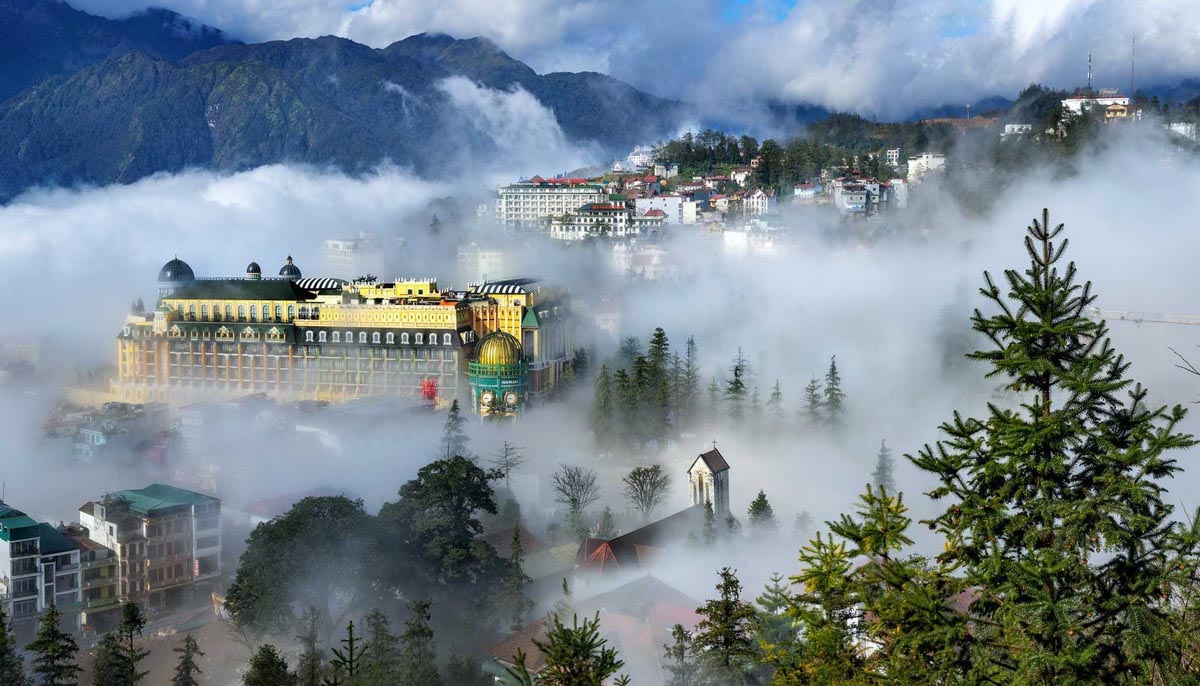
Sapa town in a misty day
The recent release of the World's 50 Most Beautiful Towns list by the U.S. magazine Condé Nast Traveler (May 2023) highlighted the beauty of Sapa as the "town in the mist."
To me, Sapa town's beauty is fascinating and distinctive due to the following factors:
-
Location: The town is nestled amidst valleys, mountains, hills, terraced rice fields, and close to the sky. Every morning, as I wake up here, I draw the curtains to see the serene scenery of misty morning landscapes.
Additionally, from Sapa, you can explore small villages of indigenous ethnic people, trek through valleys amid rice fields and hills, conquer the summit of Fansipan, etc.
-
Weather: Sapa has its charm in every season. From July to October, it's the rice planting season, while the winter months are filled with enchanting mist and the summer weather is also pleasantly mild.
-
Local Culture: Sapa is home to six ethnic communities, with a predominant presence of the Hmong, Dao, Tay, and Giay people. The area features houses nestled in villages or clinging to mountain cliffs. Each group showcases unique cultural traits.
-
Local Produce: I appreciate the cuisine, the variety of forest spices, and the herbs used by the residents up here. You certainly can't overlook the experience of indulging in these naturally authentic local delicacies when you visit.
Vietnam Iconic Terrace Rice Fields
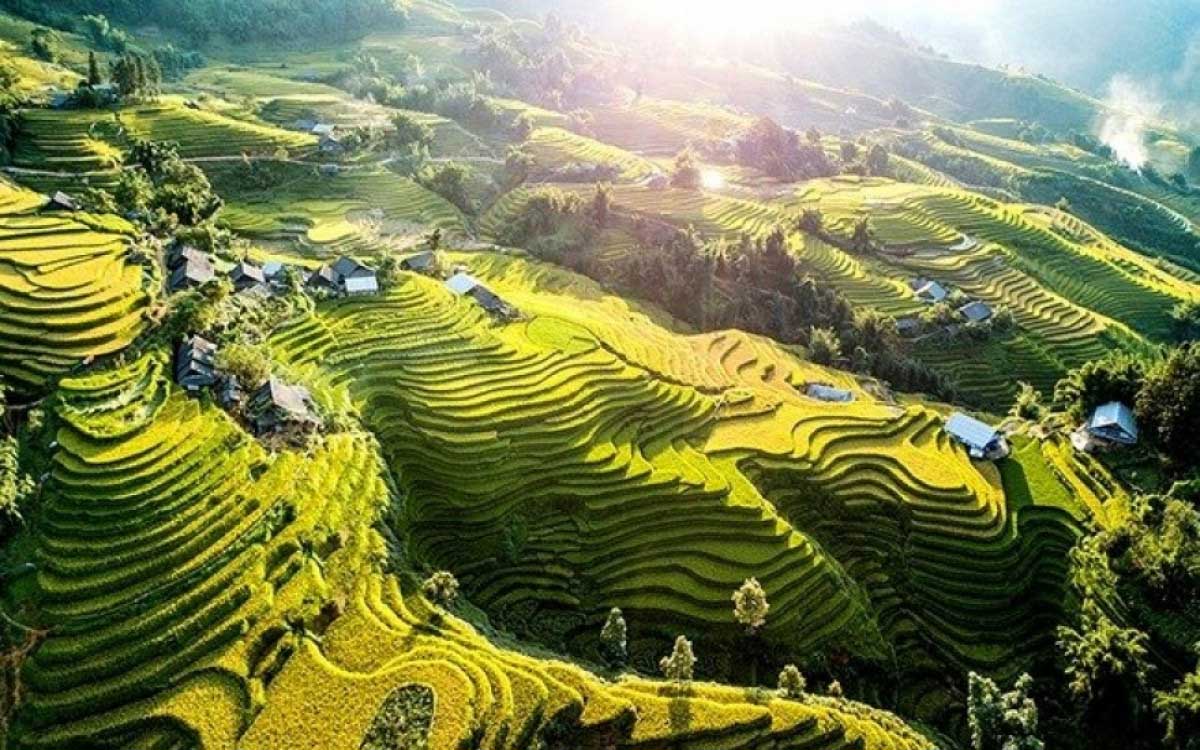
The amazing Sapa rice terrace paddies
Vietnam has a longstanding tradition of paddy cultivation. Terraced rice fields can be found in Mu Cang Chai (Yen Bai), Ha Giang, and, of course, Sapa.
Living amidst the mountains, the locals ingeniously cultivate their staple crops on these stepped lands, channeling water from the mountain springs for irrigation. I'm captivated by the terraced fields here—an awe-inspiring and natural beauty that you must witness when visiting Vietnam.
The terraced fields are at their golden time in September to early October. You may come across locals harvesting rice, leading their water buffaloes for plowing, or engaging in fishing activities during your visit at this time.
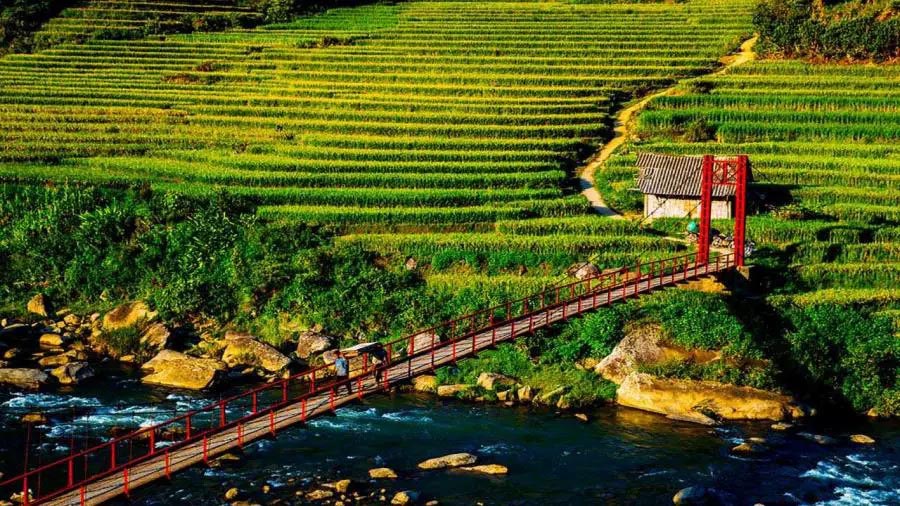
Sapa valley with rice field and stream
There are various ways to marvel at the rice terraces in Sapa during the season. You can trek through the Muong Hoa Valley, stay at local homestays near their rice fields, take the Fansipan cable car for an aerial view, or hop on the mountain climbing train.
Trekking Heaven
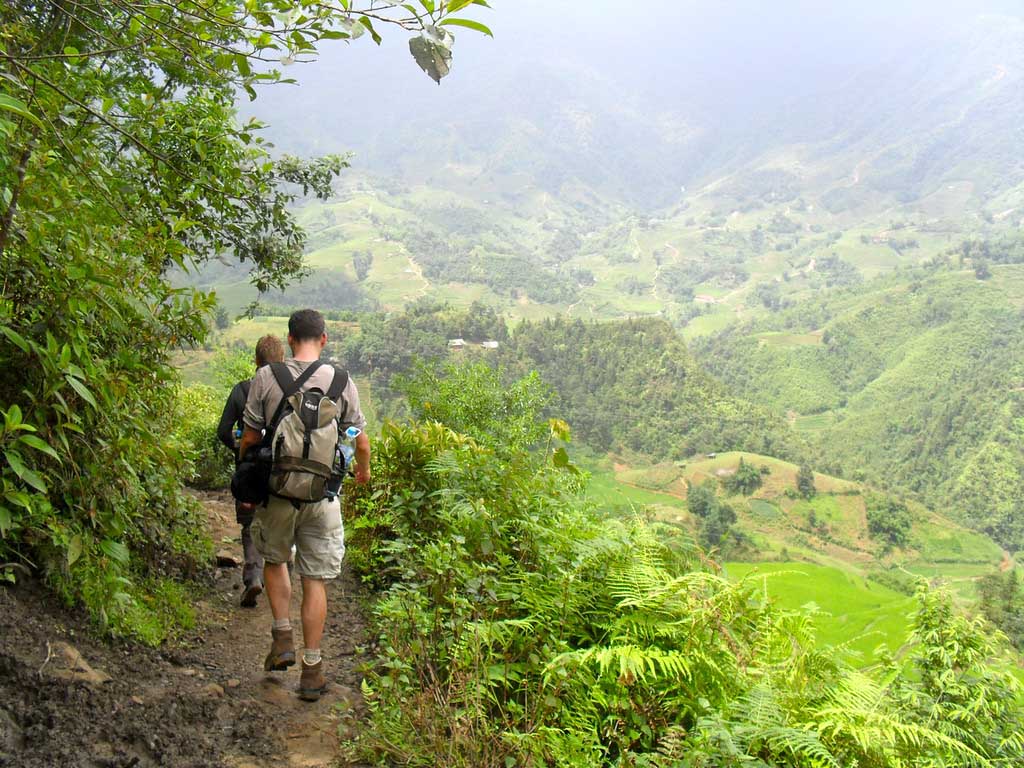
Review Sapa trekking routes
It would be remiss of me not to mention the trekking experience in Sapa when explaining "Is Sapa Vietnam worth visiting?". There are many factors that makes Sapa hike and trek more an interesting journey:
-
Distinctive Natural Marvels: Sapa’s trekking routes unveil an array of captivating natural wonders as you weave through picturesque mountains, rolling hills, enchanting valleys, terraced rice paddies, and traditional wooden dwellings. The trek is a visual feast, highlighting the region’s diverse and unique landscapes.
-
Indigenous Culture: During your trek, you can take a moment to visit villages, multigenerational homes where families do their daily work: drying corn, weaving fabric, dyeing textiles, making incense, tending to livestock, and practicing traditional singing and dancing.
-
Meeting Locals: It’s common to run into locals while they go to fields, do roadside commerce, or within their own villages. Local residents are friendly, many of them are fluent in English. Women here often clad in traditional attire and carry craft baskets. The locals are helpful with directions, willing to share their life stories if your paths cross. You might consider hiring a local guide for your journey. My guide also doubled as the homestay owner.
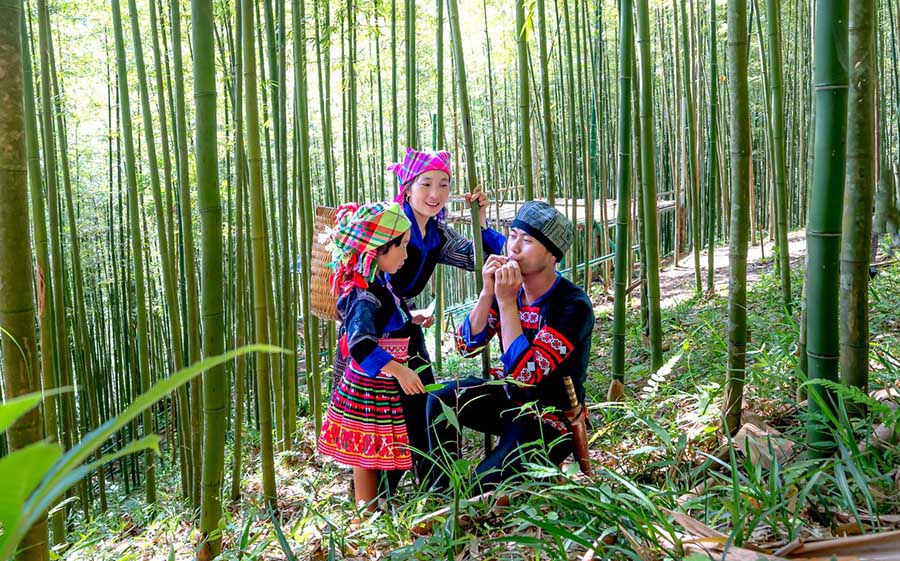
Sapa bamboo forest
In Sapa, there are numerous trekking routes at various difficulty levels for you to choose from based on what you want to explore. You can consider some of the trekking routes I’ve experienced:
-
Fansipan Route: This trek is kind of hard. The journey can span multiple days, so you should meticulously prepare for physical fitness and equipment. Along the way, you might pass through Tram Ton Pass, Sin Chai Village, or Cat Cat Village.
-
Y Linh Ho Route: Y Linh Ho trek takes only about 2-3 hours. From this point, you'll have a panoramic view of the Muong Hoa Valley with numerous breathtaking angles. Along the way, you might encounter one or more scattered houses where locals are involved in dyeing and weaving fabric. I particularly value this trail for its splendid valley view. The dirt path can be a bit rugged, so you should pay a little caution.
-
Lao Chai - Ta Van Route: This route can be considered the most gentle. Most of the local trading activities and product showcases take place here. Plus, you'll find rice fields and streams right nearby.
-
Xa Xeng - Hau Thao Route: This trail is a bit more challenging compared to Y Linh Ho as it follows mountainous terrain and is less accessible. Occasionally, you'll come across bamboo forests and locals' animal pens. This route primarily offers mainly forest landscapes with fewer rice field views. Nevertheless, the scenery remains beautifully wild.
Unique Indigenous Culture
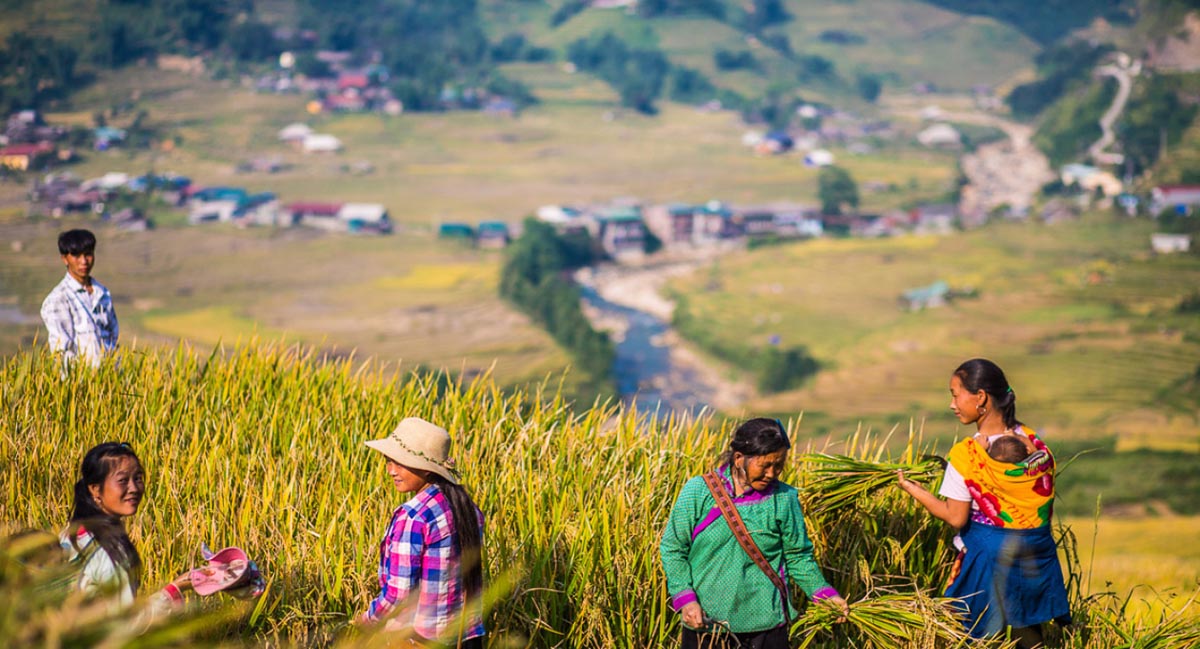
H’mong people harvest rice from the fields
Traditional life unfolds vividly in Sapa. The culture of the Sapa region is fascinating, rich in tradition and vibrant colors. The Red Dao, H’mong, Tay, and Giay possess unique characteristics, don different styles of clothing, communicate in distinct languages, and maintain diverse traditional cultures.
-
The Red Dao community is said to have originated from China. They settle in valleys or mountainous terrains for agriculture, cultivating crops like corn and rice, and growing various fruits. They are recognizable by their distinctive red headscarves. The Dao people are renowned for their traditional herbal bath and foot soaking method. I highly recommend you should try it in Sapa or buy a pack to bring home.
-
The H’mong people form the largest community in Sapa, constituting over 50% of the population. They often choose to reside in higher-altitude areas compared to the Red Dao. Additionally, they are the creators of the unique terraced fields. The majority of individuals encountered in the town of Sapa or Cat Cat village are likely to be H’mong people.
-
The Tay people often reside in stilt houses. They are renowned for dishes made from rice, such as com (young sticky rice), banh day (round glutinous rice cake), and xoi (sticky rice).
-
The Giay community settled in villages like Lao Chai and Ta Van. They are highly skilled in traditional crafts such as bamboo weaving and woodworking.
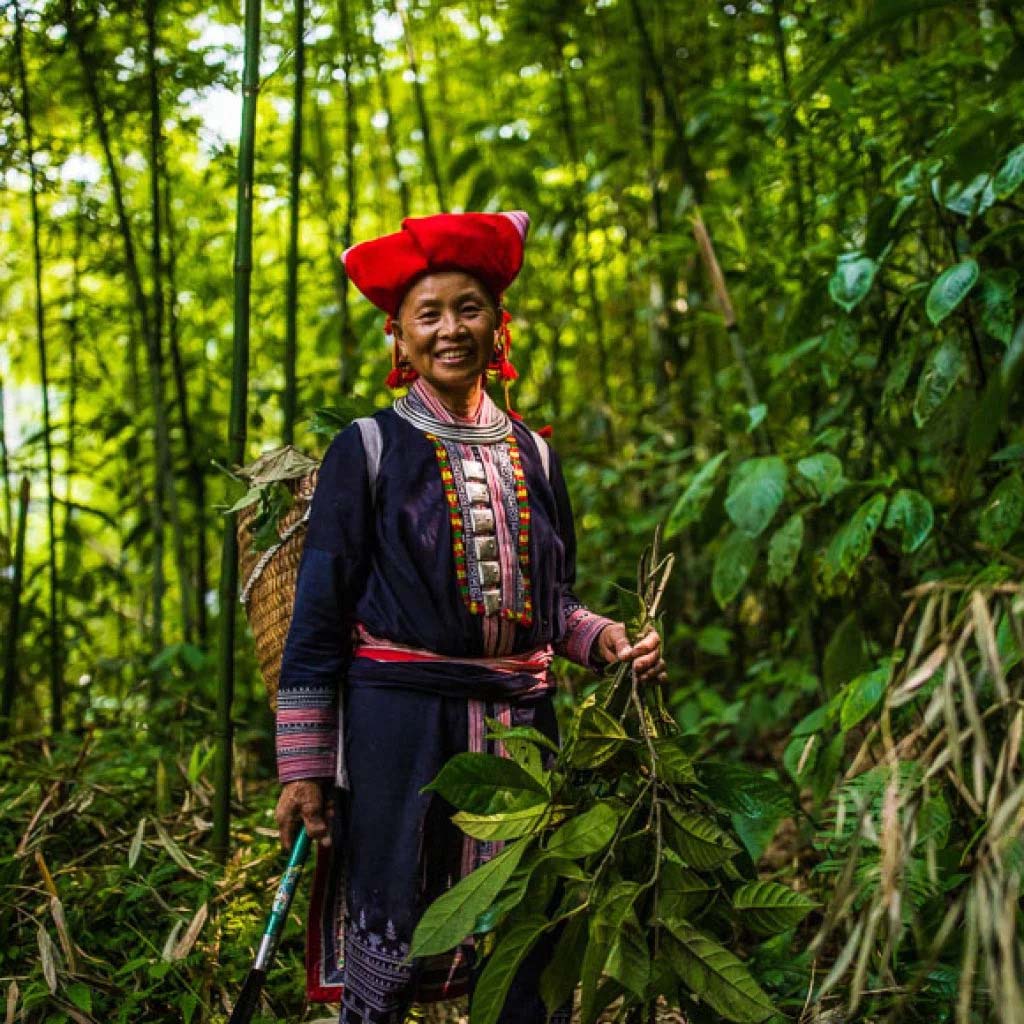
A Dao woman uses a special knife to cut herb leaves in the forest
For a richer experience, you can consider staying at local homestays, having your indigenous guides, and participating in local markets or traditional festivals to immerse yourself in the festive atmosphere of the local dances and celebrations.
Local residents also take initiative in preserving their culture and fostering economic development. Beside agricultural work, many of them establish homestays, restaurants, or work as local guides for tourists.
Friendly Travel Spot
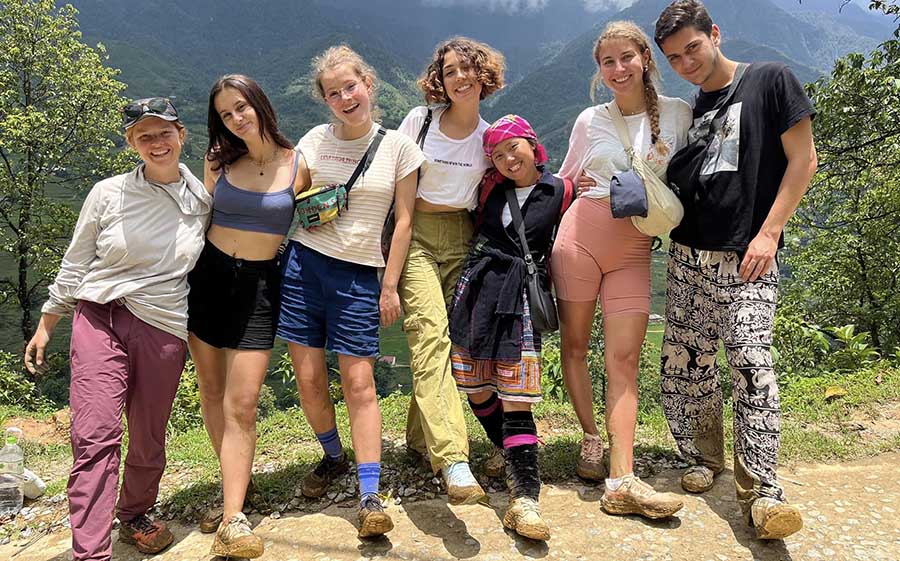
Visitors with their local guide - Is Sapa Vietnam worth visiting?
With all the things I’ve shared above, can you easily envision the uniqueness and friendliness of the people living in Sapa? I can assure you that Sapa is one of the friendliest destinations for tourists in Vietnam.
Exploring here is effortless, and visitors are warmly welcomed and assisted by Sapa-ers. Most people here are highly proficient in English. The indigenous people are more than willing to share with you their living tradition and daily stories.
With the passage of time, many have also labeled this destination of being touristy. Nevertheless, the locals in Sapa are not overly aggressive in enticing tourists. The prices for services and items here are also kept at a reasonable level with good quality.
All-Year Travel Destination
Anytime is suitable for your plan to Sapa
Here are the reasons why:
-
Autumn (August - October): This is the best time to visit Sapa as the weather is cool and pleasant. It’s like experiencing all four seasons in a day, and you can witness the ripening rice season. The average temperature is around 20 - 23°C.
-
Winter (November - February): During the winter months, temperatures drop to around 10 - 15°C. This time of the year, Sapa is often shrouded in clouds and mist, creating the picturesque "town in the mist" scene. This is perfect for admiring the sea of clouds from the top of Fansipan. Sometimes it does not have mist and rain all day.
-
Spring (February - May): Spring in Sapa boasts temperatures ranging from 15 to 20°. This season is characterized by blossoming flowers and vibrant native festivals.
-
Summer (June - July): Summer in the mountainous region of Sapa offers a more pleasant climate compared to the lowlands of the country. Its daytime temperatures hover around 25°C.
In general, Sapa is beautiful in every season. Whether it's spring, summer, or fall, it's ideal for outdoor activities and scenic exploration. Even winter has its unique charm.
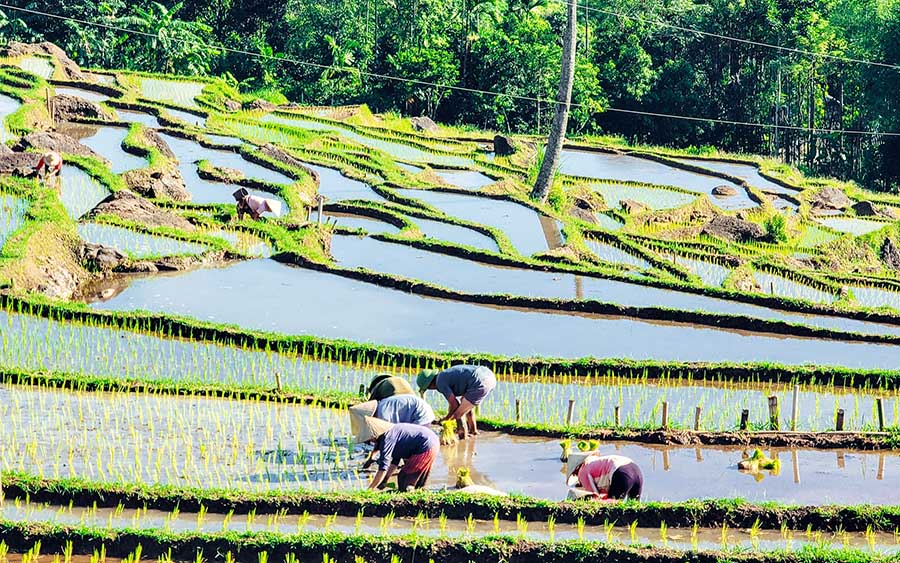
Enjoy Sapa to its finest
For a comprehensive look, don't miss our post on Vietnam travel guide!
For me, the answer to "Is Sapa Vietnam worth visiting?" is a definite yes. It's a destination full of character, with iconic natural beauty and distinctive local culture. I always feel liberated and immersed in all my days here, and I hope you'll also fully experience it in your journey. Sapa has become a vibrant hub in Northwest Vietnam, but you'll eventually discover its core and untouched essence during your visit.


